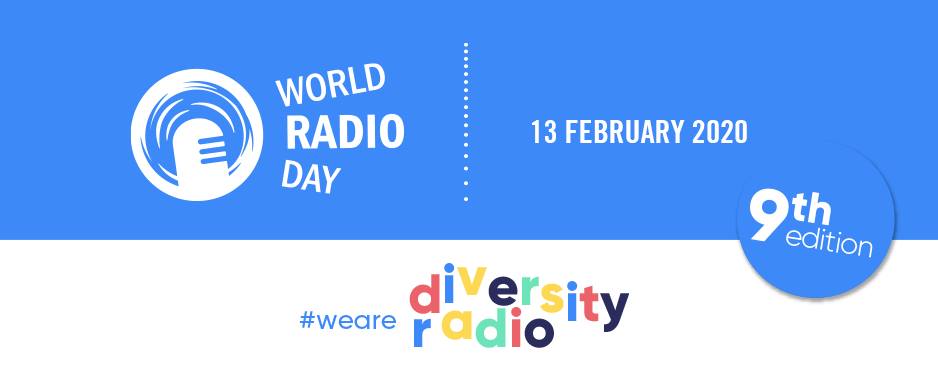On World Radio Day 2020 (WRD 2020), UNESCO calls on radio stations to uphold diversity, both in their newsroom and on the airwaves. Radio is a powerful medium for celebrating humanity in all its diversity and constitutes a platform for democratic discourse, At the global level, radio remains the most widely consumed medium. This unique ability to reach out the widest audience means radio can shape a society’s experience of diversity, stand as an arena for all voices to speak out, be represented and heard.
Radio stations should serve diverse communities, offering a wide variety of programs, viewpoints and content, and reflect the diversity of audiences in their organizations and operations.
This edition of WRD is divided into three main sub-themes:
• Advocating for pluralism in radio, including a mix of public, private and community broadcasters;
•Encouraging representation in the newsroom, with teams comprised of diverse society groups;
•Promoting a diversity of editorial content and programme types reflecting the variety of the audiences.
Diversity in the radio landscape
Diversity of voices and opinions in radio relies first on the degree of media concentration and the coexistence of different types of stations with a mix of public, private and community broadcasters. The development of policy environments conducive to transparency and diversity of media ownership is the keystone to a pluralistic, inclusive and democratic radio sector.
Technological advances are also participating to diversify the radio sector – for example with Digital Audio Broadcasting (DAB): a technology used by radio stations to broadcast digitally. Through DAB radio, the choice of stations available to listeners is dramatically increased with more stations being able to broadcast in the same areas on less frequency space than necessary for FM and AM radio.
DAB radio also offer additional information and features, such as the display of programme and song played, or the ability to pause and even record live broadcast, further enriching the radio experience.
Diversity in the newsroom
Editorial teams are usually comprised by staff from majority groups. Through equal opportunity and fair treatment policies, which prevent discrimination based on factors such as gender, origin, sexual orientation, religion, age, social and socio-economic backgrounds and/or political party, radio stations could gain multi-cultural teams that bring along different perspectives on issues, opinions and stories, thus enhancing their credibility vis-a-vis listeners.
A diverse and representative radio workforce is not only important for countering discrimination and ensuring gender representation, it is crucial for creativity and relevance of content. It thus safeguards editorial independence.
Diversity on the airwaves
Through diverse channels of transmission, types of editorial content1, programming and topics, radio reaches the widest audience globally and opens up a multitude of spaces for democratic debate on an infinity of subjects.
Radio stations can offer a wide array of shows and programmes;;-: from reportages and documentaries to talk shows and podcasts, there is something for each of.u’s’f Within the programme, diversity in the choice of angles, languages, music, invited guests and sources can further portray, engage and reflect the diversity of humanity, thus fostering tolerance, inclusion and solidarity. It is essential for media pluralism, and broadens journalists’ and programme makers’ creativity.
Key messages:
1) Radio can integrate people from diverse groups in their editorial teams, including women, youth, minority from different origins, LGBTQI, people with disability and others;
2) To manage diversity radio stations can collect data and develop equal opportunity charters to promote diversity and inclusion in their workforce;
3) Radio can fairly and equally represent all men, women and children by creating and broadcasting targeted programmes by and for specific sectors of society, while also reflecting the diversity of the population in mainstream programmes. Radio stations can also set diversity targets in programmes and regularly seek audience reactions to them;
4) Duty-bearers, including media regulators, can promote a favorable environment for radio diversity to flourish by means of different measures: for example increasing the licensing of radio operated by a variety of groups, such as indigenous/native/minority people – and/or measuring progress of broadcasting organizations towards diversity;
5s News technologies increase diversity in radio. DAB/DAB+, online streaming, satellite radio and the spread of low-costs technologies have broaden the access to cost-effective methods of transmitting and broadcasting programmes.
Similarly, podcasts have opened the door to new ways of producing and consuming audio content thus, increasing access to information and the variety of programmes available.


